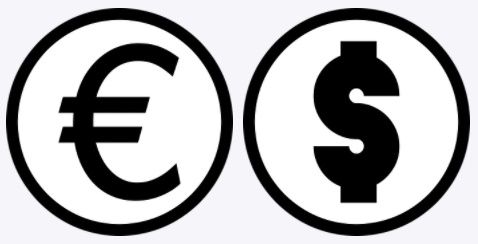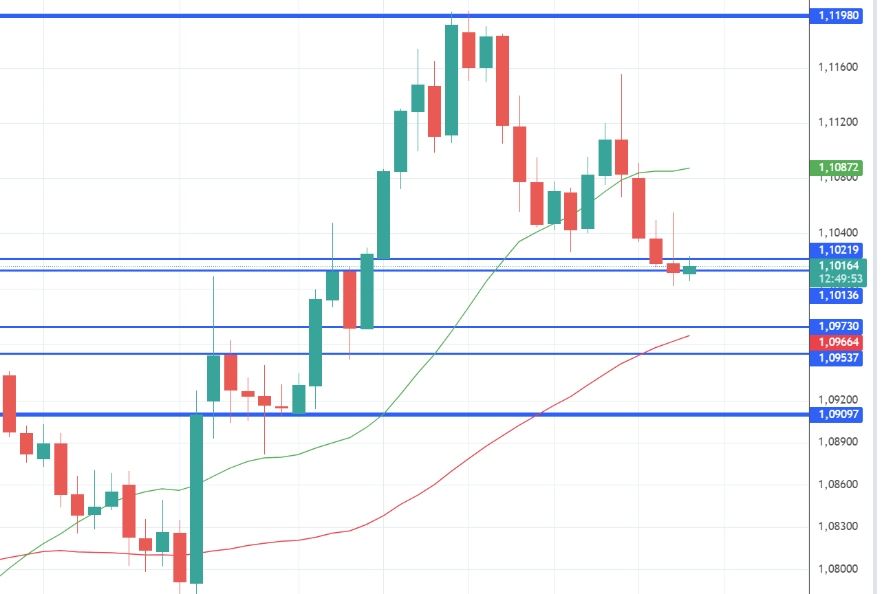Decentralized Forex Trading, without broker, the analysis of the moment. Discover the technical analysis of the moment for the EUR/USD.
Decentralized Forex Trading, what influences the price, what you should not ignore before starting to trade EUR/USD?
That’s what we’ll see a little later in this article, but let’s start with the basics.

Decentralized Forex Trading, basic information:
Here are the elements that can influence the price of this asset
1. The economic health of the Eurozone and the United States. Studying or having a good knowledge of the economic and financial data of these two zones is essential, including the data of their two respective central banks.
2. The geo-political situation, the most impactful current events that could be positive or negative for the economy and finances of these two zones.
3. The relationship between the two zones is also very important. Indeed, trade agreements or conflicts between these two zones can also influence the price of this currency pair.
4. The technical analysis, purely graphical, that offers the pair EUR / USD is also very important and this is what is proposed below
Decentralized Forex Trading with EUR/USD, what is happening now?
Technical analysis EUR/USD (daily)

The EUR/USD rate is currently fluctuating around 1.1013-1.1018, with several key technical elements to consider for future movements.
1. General Trend and Context
EUR/USD recently showed signs of correction after reaching levels around 1.1150, reflecting the divergent monetary policies between the ECB and the Fed. The Fed remains hawkish with high interest rates to curb inflation, while the ECB faces lower inflation and pressure to slow rate hikes.
2. Key Levels: Support and Resistance
- Support at 1.0950 – 1.1000: This level is critical, and as long as it holds, the pair may attempt to rise. If broken, a drop to 1.0900 is possible.
- Resistance at 1.1100 – 1.1150: This zone has capped recent upward movements. A breakout above this could signal a bullish move toward 1.1200 and higher.
3. Moving Averages
- MA20 (green) is above MA50 (red), signaling a positive outlook for a potential future rise. However, the pair remains in a range with no clear trend.
4. Oscillators: Relative Strength Index (RSI)
The 14-day RSI is around 50, indicating neutrality. This suggests the market is neither overbought nor oversold, meaning traders are waiting for a fundamental catalyst (such as the ECB decision) to take more aggressive positions.
5. Chart Patterns
- Symmetrical Triangle: On the daily chart, this pattern indicates consolidation before a breakout.
- Bullish breakout: A move above 1.1100 could push the pair towards 1.1200.
- Bearish breakout: A drop below 1.0950 may lead to a fall towards 1.0900.
- Double Bottom: A potential double bottom has formed around 1.0950, suggesting a possible bullish reversal if support holds. A breakout above 1.1100 would confirm this, with a target of 1.1150.
6. Trading Strategies
- Breakout Trading: Traders can look for a breakout of current support or resistance levels:
- Buy above 1.1100, targeting 1.1200.
- Sell below 1.0950, targeting 1.0900.
- Range Trading: If the pair remains in its current range, traders could sell near 1.1100 resistance and buy near 1.0950 support, using tight stop losses.
7. Fundamental Factors to Watch
- ECB Decisions: Upcoming monetary policy and inflation expectations in the Eurozone could directly impact EUR/USD.
- U.S. Economic Data: U.S. inflation, Fed rate decisions, and employment figures will be key to understanding the dollar’s strength.
Conclusion
EUR/USD is currently in a phase of indecision, with neutral signals from technical indicators. However, key levels like 1.0950 (support) and 1.1100 (resistance) will guide future movements. A breakout in either direction could set a new directional trend. Traders should closely monitor economic developments to adjust their trading strategies accordingly.
Decentralized Leverage Trading Platform
Important information:
Trade Forex without a broker, without registration, in a 100% decentralized way, directly from your Metamask account
In the context of the hot defi news, it is important to specify that it is now possible to trade without broker, in a totally decentralized way, in order to trade both Forex and cryptocurrencies, to learn more, discover now: this
Decentralized Leverage Trading Platform
How long has Forex trading been around?
The foreign exchange market (Forex) as we know it today has evolved over time, but its origins date back to antiquity. The earliest forms of currency trading can be traced back to the time when people began exchanging goods and services. However, modern Forex as we know it today took shape in the 20th century.
In the 1970s, when the Bretton Woods Agreement was abandoned, exchange rates began to float freely, and it was then that the foreign exchange market really took off. Technological advances also played a key role in the development of Forex trading as we know it today, with the introduction of online trading platforms and greater access to the world’s financial markets.
So, although the origins of currency trading go back a long way, modern Forex as a structured financial market accessible to individual traders took shape from the 1970s onwards and has developed considerably since then.
Recently, this evolution has seen the arrival of the first decentralized trading platforms. Today, it’s possible to trade decentralized with major and minor forex peers.
Which currency pairs are the most heavily traded?
On the foreign exchange (Forex) market, some currency pairs are more heavily traded and more liquid than others, due to their popularity and activity. Here are some of the most heavily traded currency pairs:
EUR/USD (Euro/U.S. Dollar): This is the most heavily traded pair on the Forex market, due to the high liquidity and economic importance of the euro and the U.S. dollar.
USD/JPY (US Dollar/Japanese Yen): This pair is also very popular due to Japan’s economic stability and the yen’s influence in international transactions.
GBP/USD (Pound Sterling/U.S. Dollar): This pair is often referred to as « Cable » and is widely traded due to the economic importance of the United Kingdom and the United States.
USD/CHF (US Dollar/Swiss Franc): Switzerland is known for its economic stability, making this pair attractive to traders.
AUD/USD (Australian Dollar/U.S. Dollar) and USD/CAD (U.S. Dollar/Canadian Dollar): These pairs involve the currencies of economies strongly linked to commodities, such as oil for the Canadian dollar and commodities for the Australian dollar.
These currency pairs are among the most popular and heavily traded due to their high liquidity, generally tighter spreads and volatility, which offers attractive trading opportunities for many investors.
Decentralized Leverage Trading
Community of experienced traders in the Forex, commodities and crypto markets, offering articles to help you learn about trading through: relevant information – technical and fundamental analysis. Specificity: specialized in decentralized trading.
Communauté de traders expérimentés sur les marchés du Forex, matières premières, cryptos, offrant des articles permettant de s’éduquer au trading à travers : information pertinente – analyse technique et fondamentale. Spécificité : spécialisé dans le trading décentralisé.
3 commentaires sur « Decentralized Forex Trading with EUR/USD, introduction and analysis »
Les commentaires sont fermés.